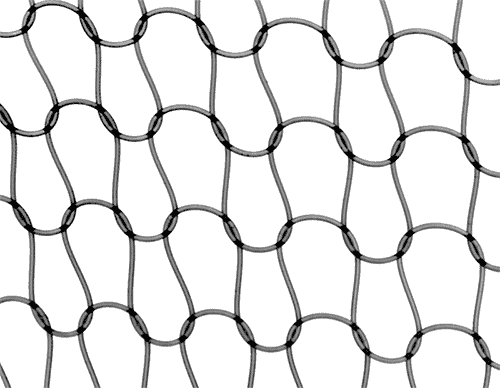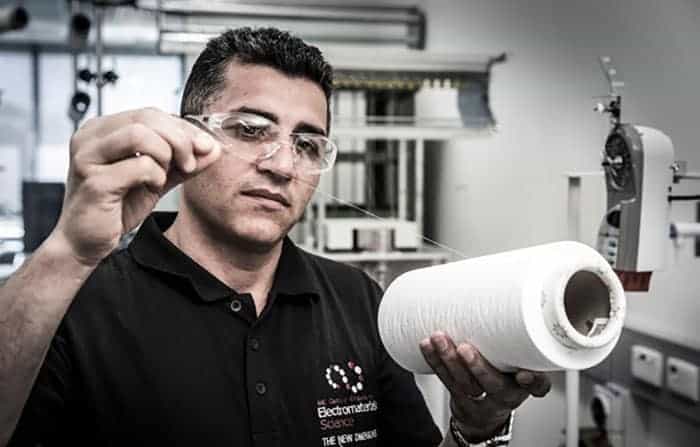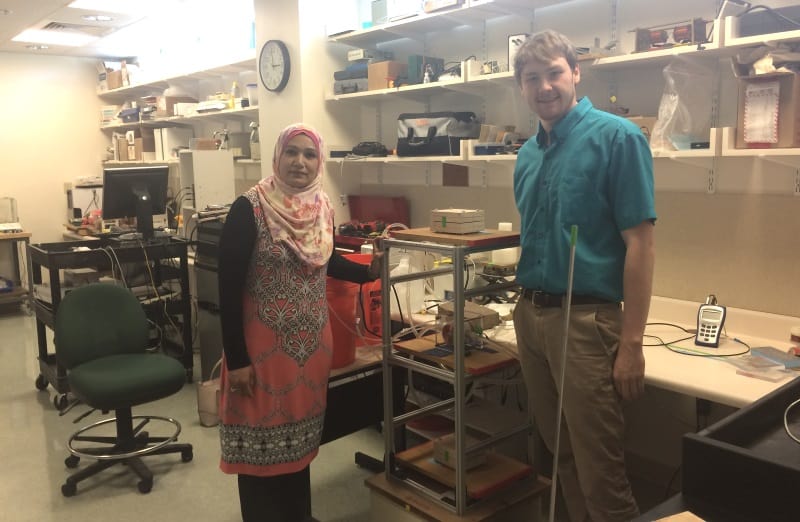Writing a popular-science book is not easy: it takes time, effort and dedication. Writing a popular-science book that sells well is even harder. It helps to be famous, of course, which is why the likes of Brian Cox, Michio Kaku and Neil de Grasse Tyson have their books plastered all over the media and piled deep on tables in bookstores. But writing a bestselling popular-science book that drills into some of the most profound questions in physics – and does so with lightness, technical accuracy, brevity and grace – is harder still.
That feat, however, is precisely what theoretical physicist Carlo Rovelli achieved with his breakthrough book Seven Brief Lessons in Physics. It was first published in Italian in 2014 and has since been translated into more than 40 languages and sold more than a million copies. Barely 70 pages long, it is a magnificent example of the adage “less is more”. Tackling everything from quantum physics and cosmology to particle physics, space–time and black holes in so few words might daunt most writers, but Rovelli – who is based at the Aix-Marseille University in France – managed that task with aplomb.
In his new book The Order of Time, Rovelli has adopted broadly the same approach. Focusing here on just one fundamental topic – the nature of time – the book is a little more conventional (and longer) than Seven Brief Lessons on Physics. The first part will be familiar territory to physicists, covering topics such as time dilation, the arrow of time, relativity, synchronization and the notion of the Planck time – the smallest possible length of time, 10–44 s. The second part imagines a world without time, while the third is more speculative, in which Rovelli wonders how we perceive a flow of time in a timeless world.
To me there are two secrets to Rovelli’s success as a writer. First, he has a deep technical knowledge of the subject – basically he knows what the hell he’s talking about ever since hanging a sheet in his student bedroom in Bologna in the 1970s with the Planck length (10–33 m) painted on it as inspiration to understand the world at such tiny scales. Second, Rovelli can condense complex ideas into beautifully written prose, gently guiding the reader through mind-bending ideas without resorting to cliché or stale metaphors. Anecdotes, history, art, philosophy and culture pepper the text.
That’s not to say that The Order of Time is easy; truly fundamental physics rarely is. I got lost several times when Rovelli discussed loop quantum gravity (his own field of research), time emerging in a world without time, the non-existence of space–time (what, really?), and (especially) the idea of “thermal time”. I also felt Rovelli could have been reined in here and there, with his analogies between apple-cider and time along with references to ”our fear of death [being] an error of evolution”. But then as the book is so short, re-reading it wouldn’t hurt or even take much time – assuming we can agree on what time really is.
To find out more about Rovelli’s writing process and thoughts on time, I put some questions to him.
You write in your book that “the nature of time is perhaps the greatest mystery”. What attracts you to this subject?
I got interested in the nature of time because of quantum gravity. It is well known that the basic equations of quantum gravity can be written without a time variable, and I wanted to fully understand what this means. Getting to understand the various sides of this question has been a long journey.
In a nutshell, how do you understand time?
I think that the key to understand time is to realize that our common concept of “time” is multi-layered. Most mistakes about the nature of time, and much of the confusion, come from taking the full package of properties we attribute to time as forming a unique bundle that either is there or not. Now we understand that many properties we attribute to time come from approximations and simplifications.
Many properties we attribute to time come from approximations and simplifications.
Carlo Rovelli
Can you give an example?
For instance, our common idea that time is one and the same for everybody comes from the fact that we usually move at speeds much smaller than the speed of light with respect to one another. As we drop approximations, time loses properties that we instinctively attribute to it. So we can use the word “time” to mean various things, depending on the generality of the context.
You claim that “divergences of opinion regarding the nature of time have diminished in the last few years”. What are physicists starting to agree upon?
Until a few years ago there were still physicists who thought that the difficult questions raised by quantum gravity about the nature of time could be circumvented simply by using an expansion of the gravitational field around Minkowski geometry to define the fundamental theory. Today few believe this.
Do you think physicists will ever solve the mystery of time?
Yes, I am optimistic. Why not? Physics has solved so many puzzles that appeared mysterious in the past. But I think that a full understanding of why time looks to us the way it does will not be a result that physicists will reach alone. Neuroscientists have to play their part. There are aspects of our intuitive sense of time that, I believe, it is a mistake to search for in physics alone. They depend on the specific structure of our brain.
A full understanding of why time looks to us the way it does will not be a result that physicists will reach alone.
Carlo Rovelli
You say our sense of the direction of time is due to the universe becoming increasingly disordered. Why do you think the cosmos began in such an ordered state?
This is one of the biggest open problems we have today. In the book, I suggest one possible speculative solution to this problem, but this is far from being established or clear. The solution I suggest is that there is a perspectival aspect in the direction of time. The notion of order depends on the ways two physical systems interact, and this may play a role. Remember that we have understood the rotation of the sky as a perspectival fact: our planet and the rest of the cosmos are in relative rotation. I suspect that something of this sort could be in play here.
The Order of Time touches a lot on the philosophy of science; how much philosophy have you studied?
I am not a philosopher, but I have studied philosophy, read philosophy and go to philosophy conferences. The best physicists of the past read a lot of philosophy. Einstein, Heisenberg, Schrödinger, Bohr, Newton – they were all nourished with philosophy. There is a current anti-philosophical fashion in physics, which I think is detrimental for the advancement of science.
Given that time is such a slippery notion, what challenges did you face in writing a book about it?
I had to keep in mind different audiences. I wanted a book that could be read by everybody, but was also meaningful and of interest for the scientists and philosophers immersed in these problems. The challenge was to keep talking to both audiences.
How would you describe your writing style?
I delete more than I write. I keep deleting. I want to say as little as possible, compatible to the main idea I want to transmit. I struggle for clarity, for myself before than the reader. I think that metaphors help. We always think metaphorically. If you read scientists like Feynman or Einstein, they had a concrete visual understanding of what they were doing. I try to get there.
I delete more than I write. I keep deleting. I want to say as little as possible, compatible to the main idea I want to transmit.
Carlo Rovelli
How conscious were you of distinguishing between accepted science and speculation?
Very much so. This is a book that covers both accepted science and new ideas. At the price of repetition, I keep repeating in the book “this is something established”, or “this is something uncertain”, or “this is just an idea I am proposing”, and so on. Before the end of the book, a short chapter summarizes the path made and once again makes the distinctions. I have complained in the past that popular science sometimes forgets this distinction, and I have been careful not to fall into this same mistake.
As a native Italian speaker, do you write in English or Italian?
I write in English when I do science, in Italian when I write for the large public. In spite of having lived outside Italy for 25 years, I find that my mother language is still the one I control better.
So what’s your verdict on the translation?
It was difficult for me to find a good translator because my writing style is unusual, as it mixes scientific precision with literary freedom. The first translators I found were either missing one side or the other: the translation was either imprecise, or flat and boring. Then my UK publisher found Simon Carnell and Erica Segre, a couple of translators who work together, joining their scientific and literary competencies, and I have found their translation perfect. It fully renders the subtleties of the original style without ever losing precision. In fact, there are passages where I like their English version more than my original Italian.
What’s your favourite book about time, not counting your own?
The Direction of Time by Hans Reichenbach. It is full of correct ideas that have not yet been absorbed by everybody.
What’s the most common question you get when speaking about your book?
Can we travel back in time?
And what’s the most surprising question you’ve been asked?
I was once talking abut the role of memory, and coherent traces about the past, in building our idea of temporality and I mentioned something about my father. At the end of the talk, an elderly person raised their hand and asked whether my father had been on stage in a theatre as a young man with a certain theatre company. It was a surreal moment where past time seemed to be constructed from converging memories, realizing in concrete what I was talking about.
What did you make of Benedict Cumberbatch’s audio recording of The Order of Time?
His voice and his interpretation adds depth and meaning to the text, and makes it much better.
You say in the book you don’t fear death. What , if anything, do you worry about?
Oh, plenty of things! Getting old, getting weak, losing love. Plus global warming, increasing belligerence, increasing social inequalities.
If we live in a timeless world, how did you find time to write a book?
I do not know how I find time to write. It is just because I like writing.








